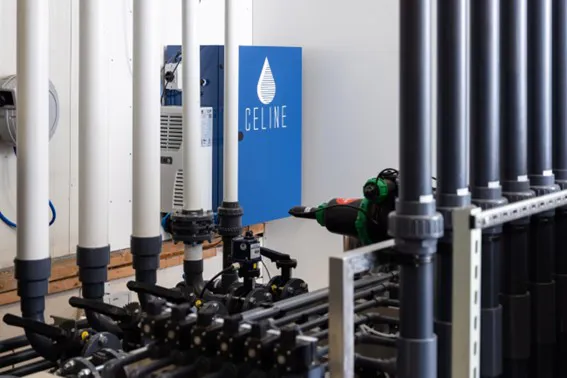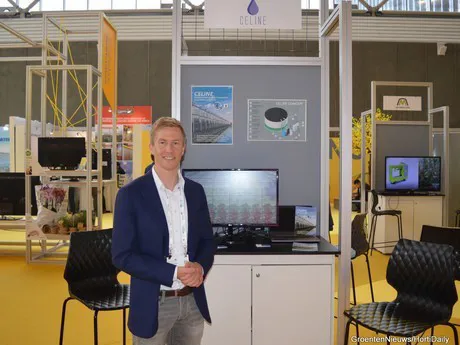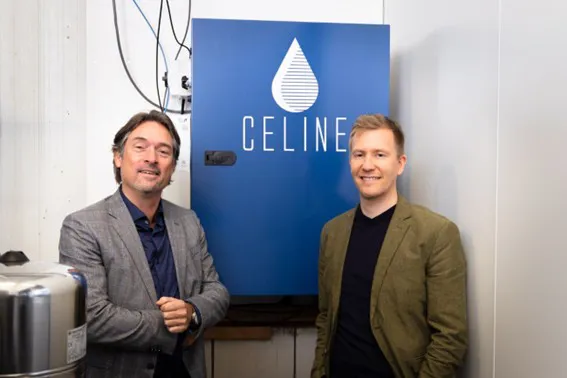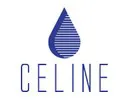The first four measurement systems to automatically measure nutrients will be installed at Dutch growers this spring. This puts CE-Line on the eve of the real practical introduction of its measuring equipment. Growers can use it to fertilize much more accurately. Precision fertilization, in other words.
"With our launching customers, we are now going to discover how the system and the nutrient data will be applied in practice," Wilco Dijkstra (CTO), on behalf of the Heerenveen-based company, looks a bit further ahead after a final year of trial runs in the greenhouse of a tomato grower. CE-Line's equipment is capable of consistently measuring the requested ten macronutrients for growers. "The main lesson from the test years is that we can measure nutrients very accurately and quickly," he says.
Micronutrients are the next step. "Measuring micronutrients in the same way didn't seem realistic to us for a long time, but we have seen in testing with growers that towards the future, it is really going to be a must for growers. In our lab, we can already measure micronutrients. Measuring at growers' premises will thus become realistic next year."

The first installation at Gitzels. Ten millimeters of water is needed per measurement. The water comes from the filter system CE-Line supplies with the measuring equipment. "The grower is sometimes surprised and wonders what the big cabinet is for if so little water goes through it. That's because the temperature in the cabinet has to be stable. There is a cooling unit in it. A dirty water supply has also been added so that the measuring cabinet itself drains the used water."
Precision fertilisation
But first, a step back. Since the Frisian company's first steps in horticulture in 2019, including participation in GreenTech in Amsterdam, the necessary tests followed. First at Wageningen University & Research and then at Royal Pride in 2021, and at tomato grower Lijntje in 2022. What stands out is that the tests were all done on greenhouse vegetables.
"Because a fruiting vegetable crop keeps producing fruit constantly, the feedback from the sector prior to the introduction was that this is where the most added value for our system could be offered. In ornamental plant cultivation, however, the crop is more often working towards one flowering moment. Yet here, too, we see more and more development towards precision fertilization. Ultimately, we are also specifically targeting the entire horticultural sector, including vertical and indoor farming. As soon as somewhat automated water with nutrients goes to plants, our equipment comes in handy."

Wilco Dijkstra at GreenTech Amsterdam 2019
Screen in the water room? Not necessarily necessary
Besides discovering that measuring micronutrients at the grower's site is closer than thought, CE-Line also came to the conclusion during the field tests that the systems should be able to run standalone without a computer involved. "The computational work can be done in the cloud. That's where the nutrient data is available. We can present the data for the grower or come face to face with the grower in the form of a printout or report, as already works when growers have measurements taken elsewhere."
Reading data on the climate computer or other data-collecting systems is also possible. "For larger growers, this is also becoming increasingly realistic," Wilco notes. Offering a screen with the system is not necessary, although it is possible. "We find that the grower is not necessarily waiting for the data in the water room. Reading data on a computer screen or on a phone from a distance is fine, as we have learned from tests at growers." Colleague Simon Meijer (CEO) adds, "It is important to realize that the grower is the owner of the data and is therefore decisive."
Specific reagents
The prototype used for testing in recent years was still custom-made. Now that the time is ripe for the first serial production, CE-Line is investing in a generic measurement system. "What will still remain custom-made are the reagents that are in the system and keep the system operational. This is slightly different for every grower. Every water is slightly different, even for growers who both grow tomatoes for example, there are differences in the water."
The Frisian company is investing in plug&play systems that can basically be installed by "any home installer of the grower." "What is important is that there is an internet connection, power, and a good water connection. It is essential for our measurements that clean water enters our system. That is why we supply a filter system with the unit."
Together with the grower, a CE-Line specialist then arranges the system. "In doing so, together with the grower, we also look at where exactly you want to measure. Basically, that is at your dirt drain and at your supply pipe. Then you know what you get in and what goes back to the plants."

Simon and Wilco at the first system installed
Measurement frequency
As mentioned, micronutrient measurement is the next step. With the growers taking delivery of the first mass-produced systems, the requirements in this are being investigated. "You can ask yourself whether growers are already waiting for hourly insight into micronutrients. We can measure in a very high frequency, but flooding the grower with data is not our intention either."
At one of the test sites, day and night hourly measurement of macronutrients was investigated in recent years. That was technically fine, but the grower couldn't really do anything with it. "The grower ended up asking us for a daily average. It was a few years back, though. In the meantime, growers have also moved on. Next year we will see what exactly growers' need for data on micronutrients is."
However, current systems have already been made suitable for measuring micronutrients. "You need different reagents for measuring micronutrients, but apart from that, we have already technically pre-sorted for it. For instance, on the visualization side, space has already been made for displaying the six micronutrients."
Behavior change
With CE-Line's system, autonomous fertilization is getting close, but are growers already doing it? "No, in our view, only partially," indicates Simon and Wilco. "Interest is there, though, also from suppliers of autonomous growing systems. They report to us for information on nutrients." Together with growers and other technical parties, Wilco sees it coming in the future. "Growers who work with liquid fertilizers AND already have automatic bin fillers already have the technical stuff for this step."
Grower behavior will also change then, he notes. "One of the growers we tested with started making adjustments to his manure recipes for his A-B bins instead of once a week, three times a week. To do so, it started adjusting the A-B bin volumes. If the bins empty faster, you can switch faster as a grower."
Wilco means to say that with the advance of new techniques, growers are also starting to work differently. "The trend used to be to make large, rather unwieldy systems and mainly make sure there was always enough water. Now you see, also in outdoor crops, precision fertilization emerging. Growers are working with smaller volumes. A manure injection unit works fastest for growers, but acceleration and more flexibility is also possible with growers working with A-B tanks if the grower is willing and daring."
For more information:
CE-Line 
Hermes 8, 8448 CK
Heerenveen, the Netherlands
Tel.: +31 (0) 513 714 400
info@celine.frl
www.celine.frl
